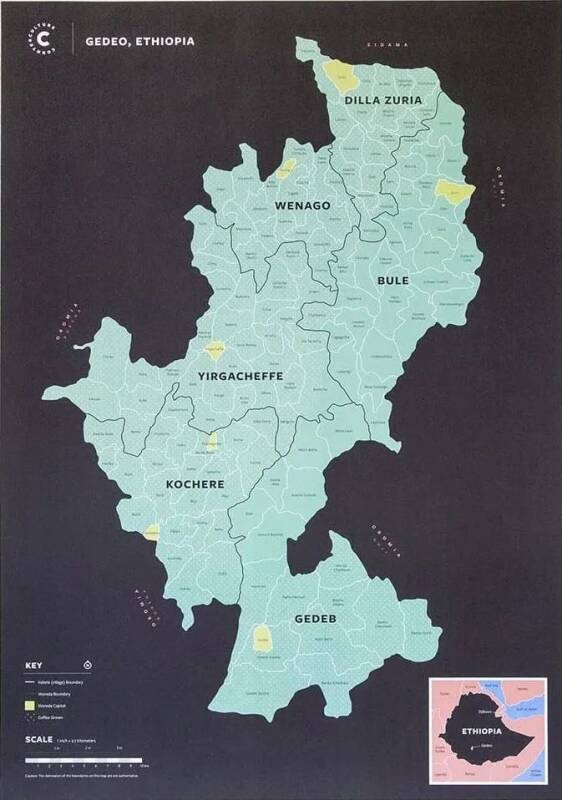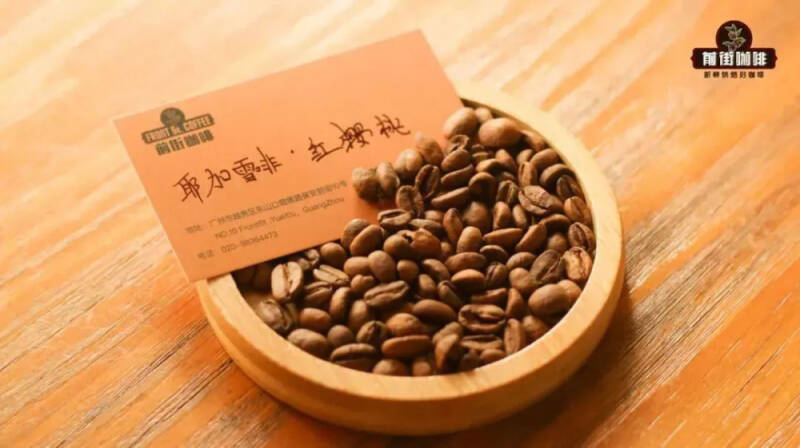What is the flavor of Ethiopian Yega Shefei using different treatments? Introduction to washed Kocher and sun-cured red cherry coffee beans
When it comes to African coffee, many people think of Ethiopia because it is recognized as the birthplace of Arabica coffee. Especially in the Yirgacheffe producing area, the coffee produced in this area is deeply loved by many coffee lovers for its unique and elegant flower aroma and bright and fresh fruit acidity.
In Qianjie Coffee, there are many kinds of coffee beans from the Yega Sheffield area, most of which are treated with traditional tanning and water washing, so what is the difference between the two different treatments?
In terms of administrative division, Yejasuefei is a town under the Gedeo Zone region, which covers an area of about 1600 square kilometers. Coffee is the most important crop in Yejasuefei. There are many well-known villages under its jurisdiction, such as Aricha and Konga. The coffee farmers in these villages plant coffee trees in their own backyard. During the harvest season, the farmers hand them over to nearby treatment stations or cooperatives for processing, and the coffee they produce is named after their place names or treatment stations.
According to the official definition of the Ethiopian Coffee and Tea Administration, Yejasuefei was once part of the coffee producing area of Sidamo, but it was later divided into a coffee producing area independently because of its unique flavor. According to the official definition, several towns around Yejasuefe that are close to the coffee quality are also included in the Yejasuefei producing area, such as the famous towns of Wenago, Kochere and Gedeb.

Yejia Xuefei is located in the south-central part of the country and belongs to the Great Rift Valley region of East Africa, so the terrain here is complex and diverse, with more mountains and volcanoes, coffee cultivation on the slopes of 1750-2200 meters above sea level, fertile land, rich water resources and plenty of sunshine, with unique conditions for growing coffee. Ethiopia also attaches great importance to the coffee industry in the Yega Sheffield region, and the government applied for a patent for the name "Yirgacheffe" in 2004.
Ethiopia has been growing coffee for thousands of years, first using the ancient sun treatment, and then introducing water washing treatment in 1972. However, in the following time, due to the heavy use of water in the washing process, which can reduce the defect rate of coffee and make the flavor cleaner, so the local water washing treatment is used more frequently.
On the front street, there are washed coffee beans from Yega Fischer. After brewing, you can smell the aroma of jasmine. The entrance will have the sweet and sour flavor of tropical fruit, lemon and citrus flavor, and the overall taste is smooth.
However, there are also farmers who prefer sun treatment, through improved sun treatment to improve the flavor, reduce defects, sun treatment also returned to everyone's field of vision. The red cherry coffee beans on Qianjie Street are from the Yega Sheffield area and are sun-treated. After brewing, they will smell slightly fermented fruit, fresh lemon acidity, berry and strawberry flavor, and refreshing taste.

In fact, the most essential difference between the washing treatment and the sun treatment is that the washing treatment is cleaner and fresher in the taste, while the sun treatment retains the flavor of the flesh, which is relatively rich and rich.
For more information about coffee producing areas, please scan the code directly and follow: coffee comments.
Long press the QR code to follow:
Important Notice :
前街咖啡 FrontStreet Coffee has moved to new addredd:
FrontStreet Coffee Address: 315,Donghua East Road,GuangZhou
Tel:020 38364473
- Prev

Vietnam reduced production by nearly 7%! Continue to push up Robusta coffee prices
Recently, according to Vietnam media reports, the Asian International Coffee Conference was held in Ho Chi Minh City, Vietnam. During this period, the Vietnam Coffee and Cocoa Association (VICOFA) reported that Vietnam's coffee crop production in 2024/25 is expected to reach 28 million bags, an increase of 1 million bags from the previous forecast, but compared with the previous season
- Next

How to make volcanic eruptions among the three genres of Japanese hand-brewed coffee? What are the famous brewing methods in Japan? How to make a volcano boiling method?
This brewing method has been shared with Qianjie no less than three times. Why? Because this method is indeed different from traditional ones, not only is the deep-roasted coffee brewed full of sweetness, but the entire brewing process also has a very excellent ornamental character. In the past, Qianjie always shared how to use this method, so today, Qianjie will come to analyze
Related
- What ratio of water temperature and ground does the smart cup method use to press coffee? The difference between brewed coffee and filtered coffee?
- What is the standard process for the purpose of coffee cup testing? What is the difference between hand-brewed coffee and cup testing?
- How to use hand-brewed coffee paragon small golden balls? How does cold coffee lock in the aroma of coffee?
- Is American coffee black? What is the difference between American coffee and drip coffee?
- Unexpected! Well-known tea beverage brand Lele Tea will withdraw from the Zhengzhou market!
- Starbucks enters the fashion and beauty industry?! Netizen: Give me an ice American eye cream
- Why can American refills for free? The difference between Americano and American drip pot coffee
- Being chased out of the rain in front of Starbucks?! Store: Sheltering from rain under umbrellas poses a safety hazard
- The white moonlight has changed?! Lucky launches "Big Winter Pear American"
- Hand-brewed coffee three-stage method, high-sweet and universal brewing method to share! What does the high sweet water level of hand-brewed coffee mean?

